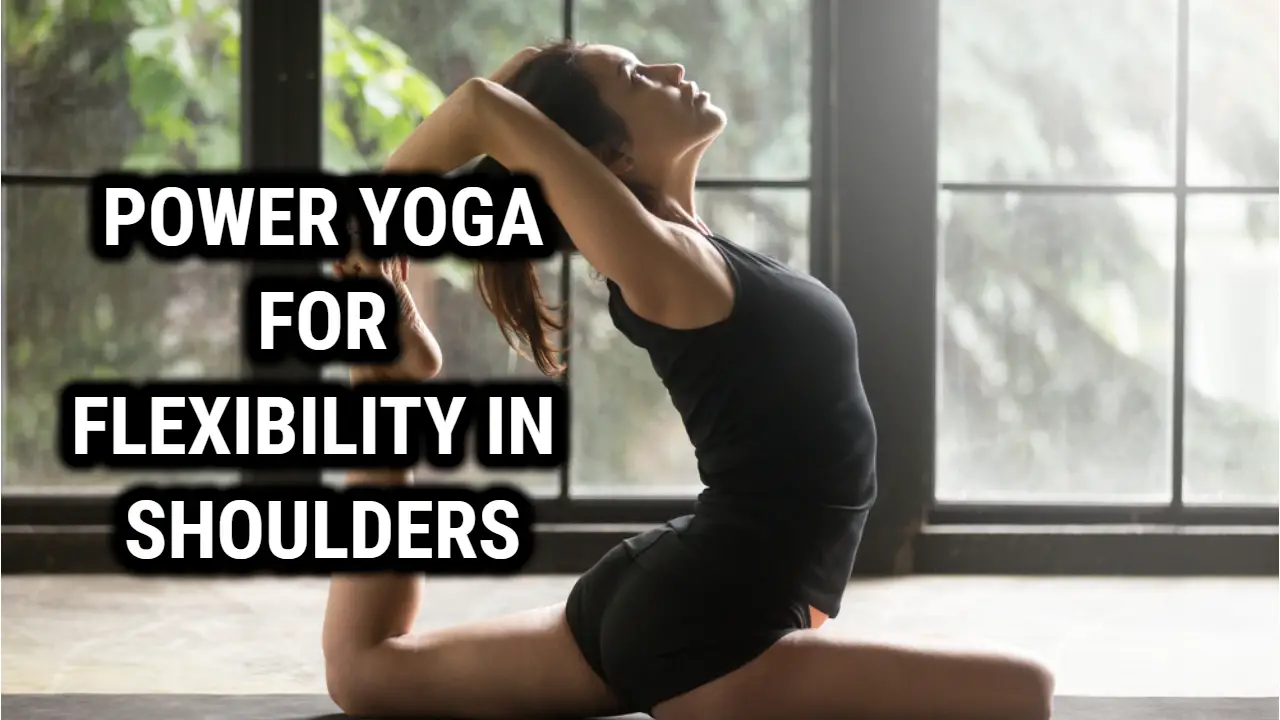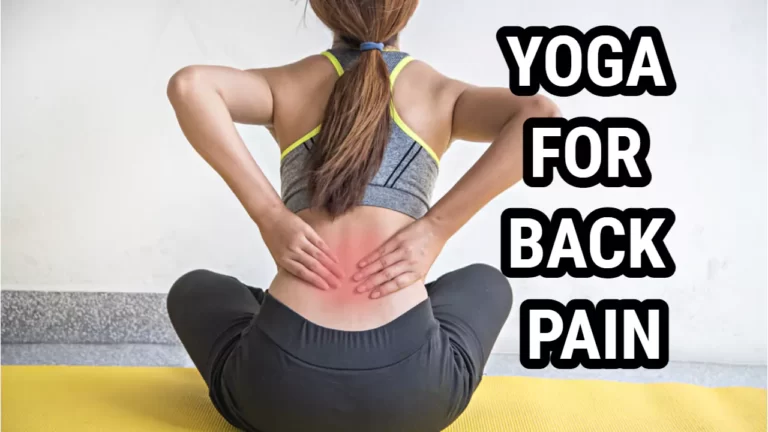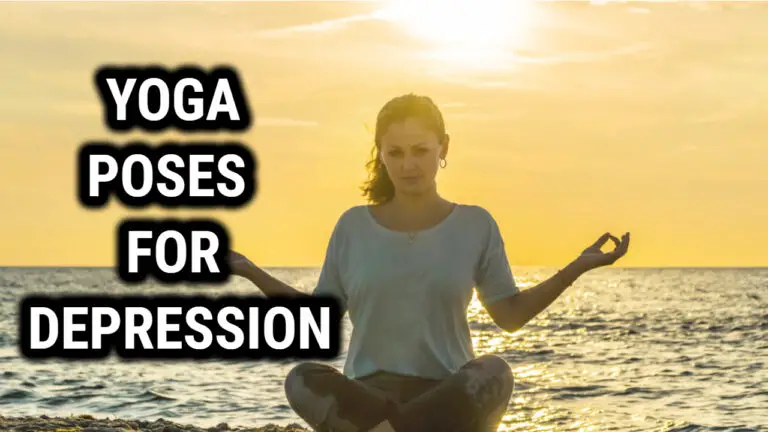8 Power Yoga Poses for Flexibility in the Shoulders

If you’re an athlete or someone who frequently engages in sports, it’s crucial to have good shoulder flexibility. This is because healthy shoulder joints and muscles provide greater range of motion, mobility, and balance.
At the same time, by developing shoulder flexibility, you can prevent injuries and other conditions—such as tendonitis and bursitis—that result from the overuse of the shoulder muscles. There are many ways to develop healthy shoulders, and one of the most effective ways is through power yoga. Here, we’ll take a look at 8 power yoga poses that can help you improve your shoulder flexibility.
Why is Shoulder Flexibility Important for Athletes?
Increase Range of Motion and Mobility
Shoulder flexibility is crucial for athletes because it enables them to move their arms and shoulders in different directions and positions. As a result, athletes can enhance their range of motion, mobility, and strength. With enhanced shoulder flexibility, athletes can make quick, powerful movements that allow them to perform their sport with more ease and quality.
Prevent Injuries
Shoulder injuries are common in sports and fitness activities—especially for those who engage in frequent overhead movements. Overuse, poor posture, and lack of flexibility can cause pain, inflammation, and chronic conditions that make it difficult for athletes to perform their daily activities. By increasing shoulder flexibility, however, athletes can prevent injuries, relieve pain, and improve their overall health.
Improve Balance and Stability
Shoulder flexibility is also crucial for balance and stability. For example, if you’re a basketball player, a swimmer, or a gymnast, strong and flexible shoulders are important for balance when landing from a jump, diving off the board, or performing a routine on the balance beam. By practicing power yoga for shoulder flexibility, you can improve your balance and stability and build greater confidence in your movements.
Overview of Power Yoga for Shoulder Flexibility
What is Power Yoga?
Power yoga is an intense and dynamic form of yoga that incorporates vigorous and flowing movements, sun salutations, and deep stretches. It’s characterized by its emphasis on strength, physical challenge, and mindfulness. Unlike traditional yoga, power yoga is less focused on meditation and more focused on building body strength and flexibility.
Benefits of Power Yoga for Shoulders
Power yoga is an excellent way to develop shoulder flexibility because it targets the upper body muscles, particularly the muscles surrounding the shoulders, chest, and upper back. Power yoga also improves breathing technique, enhances circulation, and reduces stress and tension in the body. With consistent practice of power yoga, you can increase flexibility in your shoulders, build strength in your upper body, and improve your overall physical wellness.
Precautions and Safety Guidelines
Before practicing power yoga, it’s crucial to consult your doctor if you have any underlying health conditions that may affect your ability to practice yoga. You should also look for a qualified yoga instructor who can guide you through the poses and provide modifications and variations that suit your needs and fitness level. Additionally, it’s essential to listen to your body and avoid any poses or movements that cause pain or discomfort.
8 Power Yoga Poses for Shoulder Flexibility
1. Downward-Facing Dog
Begin on your hands and knees, then slowly lift your hips up and back, straightening your arms and legs into an inverted V-shape. Press your hands firmly into the ground, and lift your hips up and back to lengthen and stretch your spine and hamstrings. Hold for 5-15 breaths.
2. Dolphin Pose
Starting on your hands and knees, lower your forearms onto the ground and interlace your fingers. Push your forearms and hands into the ground as you lift your hips up and back into a dolphin pose. Hold for 10-15 breaths.
3. Puppy Pose
Begin on your hands and knees, then walk your hands forward as you lower your chest toward the ground. Keep your hips above your knees, and stretch your arms forward as you lengthen your spine. Hold for 5-10 breaths.
4. Child’s Pose with Shoulder Stretch
Begin in a kneeling position, then lower your chest to the ground and bring your arms behind your back. Interlace your fingers and lift your arms toward the ceiling to stretch your shoulders and chest. Hold for 5-10 breaths.
5. Warrior II Pose
Begin in a standing position, then step your right foot back and turn your left foot out. Reach your arms out to the sides and bend your left knee, keeping it above your ankle. Look over your left hand as you press down through your feet and lift your arms up. Hold for 15-20 breaths, then change sides.
6. Extended Side Angle Pose
Begin in Warrior II pose, then reach your left arm forward and lower it to the inside of your left leg. Reach your right arm toward the ceiling and look up, creating a diagonal line from your right fingertips to your left foot. Hold for 10-15 breaths, then switch sides.
7. Reverse Prayer Pose
Stand with your feet hip-distance apart, then bring your hands behind your back and interlace your fingers. Press your palms together as you reach your arms down and back. Hold for 2 minutes.
8. Eagle Pose
Stand with your feet hip-distance apart, then cross your right arm over your left arm and bend your elbows so that your palms are touching. Cross your right leg over your left leg and sink down into a chair pose. Hold for 10-15 breaths, then switch sides.
Tips for Practicing Power Yoga to Increase Shoulder Flexibility
Engage Your Core and Keep Your Hips Level
When practicing power yoga, it’s important to engage your core muscles to support your spine and keep your hips level. This helps you maintain proper alignment and avoid unnecessary strain on your shoulders and upper back.
Listen to Your Body and Go at Your Own Pace
Yoga is about listening to your body and honoring its needs and limitations. It’s important to go at your own pace and avoid pushing yourself too hard or beyond your limits. This can help you avoid injuries and get the most out of your yoga practice.
Use Props for Support and Modification
If you’re a beginner or dealing with a specific condition, it’s important to use props such as blocks, straps, or blankets to support your body and modify the poses. This can help you deepen your practice and build strength and flexibility in a safe and effective way.
FAQ’s
Q: How long does a power yoga for flexibility in the shoulders class last?
A: A power yoga for flexibility class can last anywhere from 30 minutes to an hour, but the most common class duration is 30 minutes.
Q: What are some power yoga positions that can help open up the shoulders?
A: Some power yoga positions that can help open up the shoulders include downward dog, eagle pose, dolphin pose, and shoulder stand.
Q: Can power yoga for flexibility be done by beginners?
A: Yes, beginners can join power yoga classes but it’s important to assess the level of fitness and experience in yoga before joining. It’s best to start with a 30-minute full body yoga class and gradually move towards a power yoga practice.
Q: Does power yoga for flexibility also strengthen lower back and neck muscles?
A: Yes, power yoga for flexibility often includes strengthening exercises that target the lower back and neck muscles.
Q: How often should someone practice power yoga for flexibility?
A: Power yoga for flexibility can be practiced as often as desired, but it’s recommended to give the muscles enough time to rest and recover. 2-3 times per week is a good starting point.
Q: What are some benefits of power yoga for athletes?
A: Power yoga can help athletes improve their balance, flexibility, and mental focus. It can also help to prevent injuries by stretching and strengthening the muscles used in sports activities.
Q: Can power yoga for flexibility also utilize yin or deep tissue yoga postures?
A: Yes, power yoga can include yin or deep tissue yoga postures that target tightness in the shoulders and neck.
Q: How can a yoga ball be used to strengthen shoulder muscles?
A: A yoga ball can be utilized to work out the shoulder muscles through a variety of exercises such as push-ups, overhead presses, and ball rolls.
Conclusion
Final Thoughts on Power Yoga for Shoulder Flexibility
By practicing the power yoga poses mentioned above, you can increase your shoulder flexibility, build strength in your upper body, and improve your overall health and wellness. Remember to always listen to your body and consult a qualified yoga instructor for guidance and support on your yoga journey.






